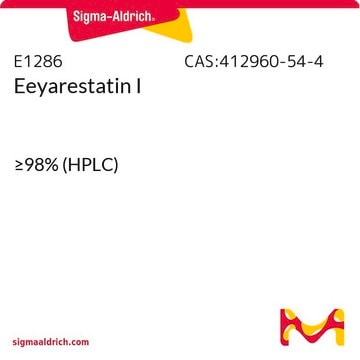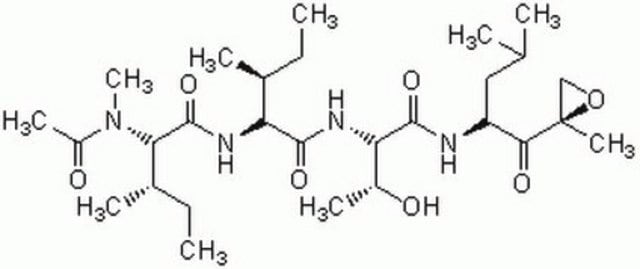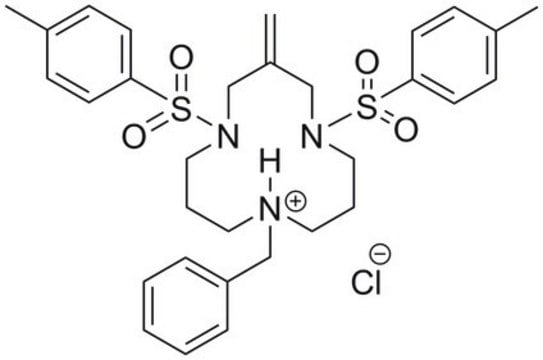324521
Eeyarestatin I
A cell-permeable oxo-imidazolidinyl-hydroxyurea that localizes to ER, where it interacts with AAA ATPase p97 via its nitrofuran-containing moiety, without exhibiting affinity toward Hsp70 / ATPase NSF
Synonyme(s) :
Eeyarestatin I, 1-(4-Chloro-phenyl)-3-(3-(4-chloro-phenyl)-5,5-dimethyl-1-(3-(5-nitro-furan-2-yl)-allyldiene-hydrazinocarbonylmethyl)-2-oxo-imidazolidin-4-yl)-1-hydroxyl-urea, EerI, ES1, Valosin-containing Protein Inhibitor II, VCP Inhibitor II, ERAD Inhibitor II, p97 Inhibitor II
About This Item
Produits recommandés
Niveau de qualité
Pureté
≥90% (HPLC)
Forme
solid
Fabricant/nom de marque
Calbiochem®
Conditions de stockage
OK to freeze
protect from light
Couleur
light yellow-orange
Solubilité
DMSO: 100 mg/mL
Conditions d'expédition
ambient
Température de stockage
2-8°C
InChI
1S/C27H25Cl2N7O7/c1-27(2)24(35(40)25(38)31-19-9-5-17(28)6-10-19)34(20-11-7-18(29)8-12-20)26(39)33(27)16-22(37)32-30-15-3-4-21-13-14-23(43-21)36(41)42/h3-15,24,40H,16H2,1-2H3,(H,31,38)(H,32,37)
Clé InChI
JTUXTPWYZXWOIB-UHFFFAOYSA-N
Description générale
Conditionnement
Avertissement
Reconstitution
Autres remarques
Wang. Q, et al. 2010. PLoS ONE5, e15479.
Cross, B.C.S., et al. 2009. J. Cell. Sci.122, 4393.
Wang, Q., et al. 2009. Proc. Natl. Acad. Sci. USA106, 2200.
Wang, Q., et al. 2008. J. Biol. Chem.283, 7445.
Fiebiger, E., et al. 2004. Mol. Biol. Cell15, 1635.
Informations légales
Code de la classe de stockage
11 - Combustible Solids
Classe de danger pour l'eau (WGK)
WGK 3
Point d'éclair (°F)
Not applicable
Point d'éclair (°C)
Not applicable
Certificats d'analyse (COA)
Recherchez un Certificats d'analyse (COA) en saisissant le numéro de lot du produit. Les numéros de lot figurent sur l'étiquette du produit après les mots "Lot" ou "Batch".
Déjà en possession de ce produit ?
Retrouvez la documentation relative aux produits que vous avez récemment achetés dans la Bibliothèque de documents.
Notre équipe de scientifiques dispose d'une expérience dans tous les secteurs de la recherche, notamment en sciences de la vie, science des matériaux, synthèse chimique, chromatographie, analyse et dans de nombreux autres domaines..
Contacter notre Service technique







